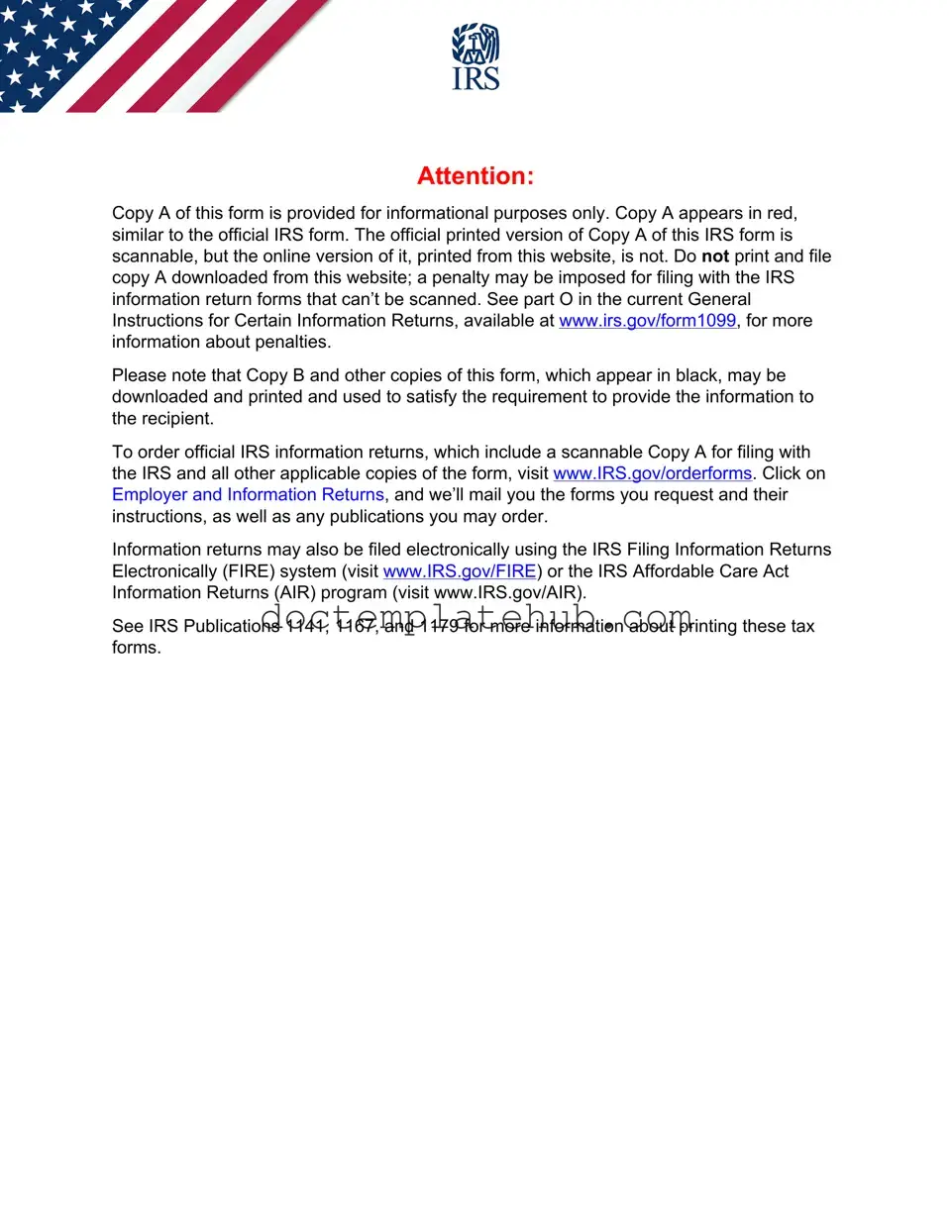What is the 1099-NEC form?
The 1099-NEC form is used to report nonemployee compensation. If you earned money as an independent contractor, freelancer, or other nonemployee, this form is likely relevant to you. It helps the IRS track income that isn’t subject to withholding, meaning taxes aren’t taken out at the time of payment. This form must be filed by the payer who made the payments and is essential for both the payer and the recipient for accurate tax reporting.
Who needs to file a 1099-NEC?
If you paid someone $600 or more for services performed in the course of your trade or business, you must file a 1099-NEC. This applies to individuals, partnerships, and corporations, although payments to corporations generally do not require a 1099-NEC. The recipient must also receive a copy of the form. This ensures they report their income correctly on their tax return.
How do I obtain a 1099-NEC form?
You cannot simply print the 1099-NEC form from the IRS website for submission to the IRS. Instead, you need to order the official printed version, which is scannable. You can do this by visiting the IRS website and navigating to the order forms section. Alternatively, you can file electronically using the IRS Filing Information Returns Electronically (FIRE) system or the Affordable Care Act Information Returns (AIR) program.
What happens if I file a non-scannable version of the 1099-NEC?
Filing a non-scannable version of the 1099-NEC can lead to penalties from the IRS. The IRS requires that the submitted forms be in a format that can be scanned. If you file a form that cannot be scanned, you risk incurring fines or other penalties. Therefore, always ensure you are using the correct, official form when filing.
What should I do if I believe I am an employee but received a 1099-NEC?
If you received a 1099-NEC but believe you should be classified as an employee, it’s important to address this issue. First, try to discuss it with your payer to correct the classification. If they refuse, you can report the income shown on the 1099-NEC as wages on your tax return. Additionally, you may need to complete Form 8919 to calculate and report your share of social security and Medicare tax due on that income.
What information is included on the 1099-NEC?
The 1099-NEC includes several important pieces of information. This includes the payer's and recipient's names, addresses, and taxpayer identification numbers (TINs). The form also shows the total nonemployee compensation paid, any federal income tax withheld, and state tax information if applicable. It’s crucial to review this information for accuracy before filing, as errors can complicate tax reporting for both parties.
